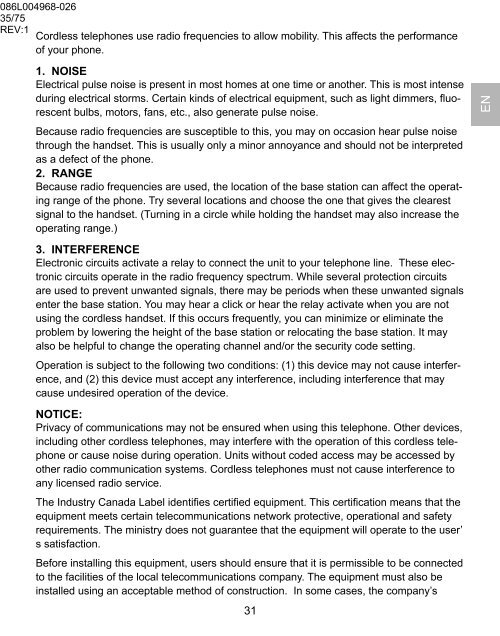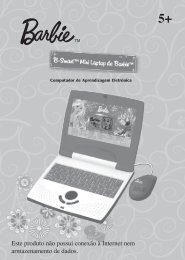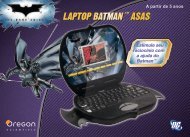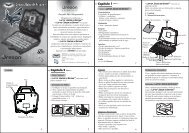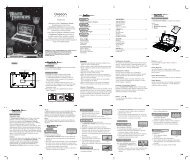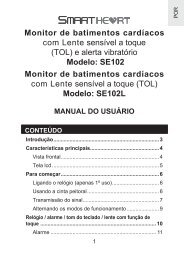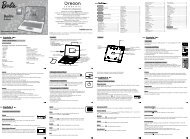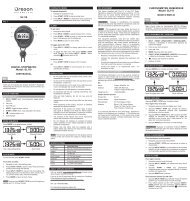OS5851L-BR Manual de Instruções Modelo ... - Oregon Scientific
OS5851L-BR Manual de Instruções Modelo ... - Oregon Scientific
OS5851L-BR Manual de Instruções Modelo ... - Oregon Scientific
Create successful ePaper yourself
Turn your PDF publications into a flip-book with our unique Google optimized e-Paper software.
086L004968-026<br />
35/75<br />
REV:1<br />
Cordless telephones use radio frequencies to allow mobility. This affects the performance<br />
of your phone.<br />
1. NOISE<br />
Electrical pulse noise is present in most homes at one time or another. This is most intense<br />
during electrical storms. Certain kinds of electrical equipment, such as light dimmers, fluorescent<br />
bulbs, motors, fans, etc., also generate pulse noise.<br />
Because radio frequencies are susceptible to this, you may on occasion hear pulse noise<br />
through the handset. This is usually only a minor annoyance and should not be interpreted<br />
as a <strong>de</strong>fect of the phone.<br />
2. RANGE<br />
Because radio frequencies are used, the location of the base station can affect the operating<br />
range of the phone. Try several locations and choose the one that gives the clearest<br />
signal to the handset. (Turning in a circle while holding the handset may also increase the<br />
operating range.)<br />
3. INTERFERENCE<br />
Electronic circuits activate a relay to connect the unit to your telephone line. These electronic<br />
circuits operate in the radio frequency spectrum. While several protection circuits<br />
are used to prevent unwanted signals, there may be periods when these unwanted signals<br />
enter the base station. You may hear a click or hear the relay activate when you are not<br />
using the cordless handset. If this occurs frequently, you can minimize or eliminate the<br />
problem by lowering the height of the base station or relocating the base station. It may<br />
also be helpful to change the operating channel and/or the security co<strong>de</strong> setting.<br />
Operation is subject to the following two conditions: (1) this <strong>de</strong>vice may not cause interference,<br />
and (2) this <strong>de</strong>vice must accept any interference, including interference that may<br />
cause un<strong>de</strong>sired operation of the <strong>de</strong>vice.<br />
NOTICE:<br />
Privacy of communications may not be ensured when using this telephone. Other <strong>de</strong>vices,<br />
including other cordless telephones, may interfere with the operation of this cordless telephone<br />
or cause noise during operation. Units without co<strong>de</strong>d access may be accessed by<br />
other radio communication systems. Cordless telephones must not cause interference to<br />
any licensed radio service.<br />
The Industry Canada Label i<strong>de</strong>ntifies certified equipment. This certification means that the<br />
equipment meets certain telecommunications network protective, operational and safety<br />
requirements. The ministry does not guarantee that the equipment will operate to the user’<br />
s satisfaction.<br />
Before installing this equipment, users should ensure that it is permissible to be connected<br />
to the facilities of the local telecommunications company. The equipment must also be<br />
installed using an acceptable method of construction. In some cases, the company’s<br />
31<br />
EN


